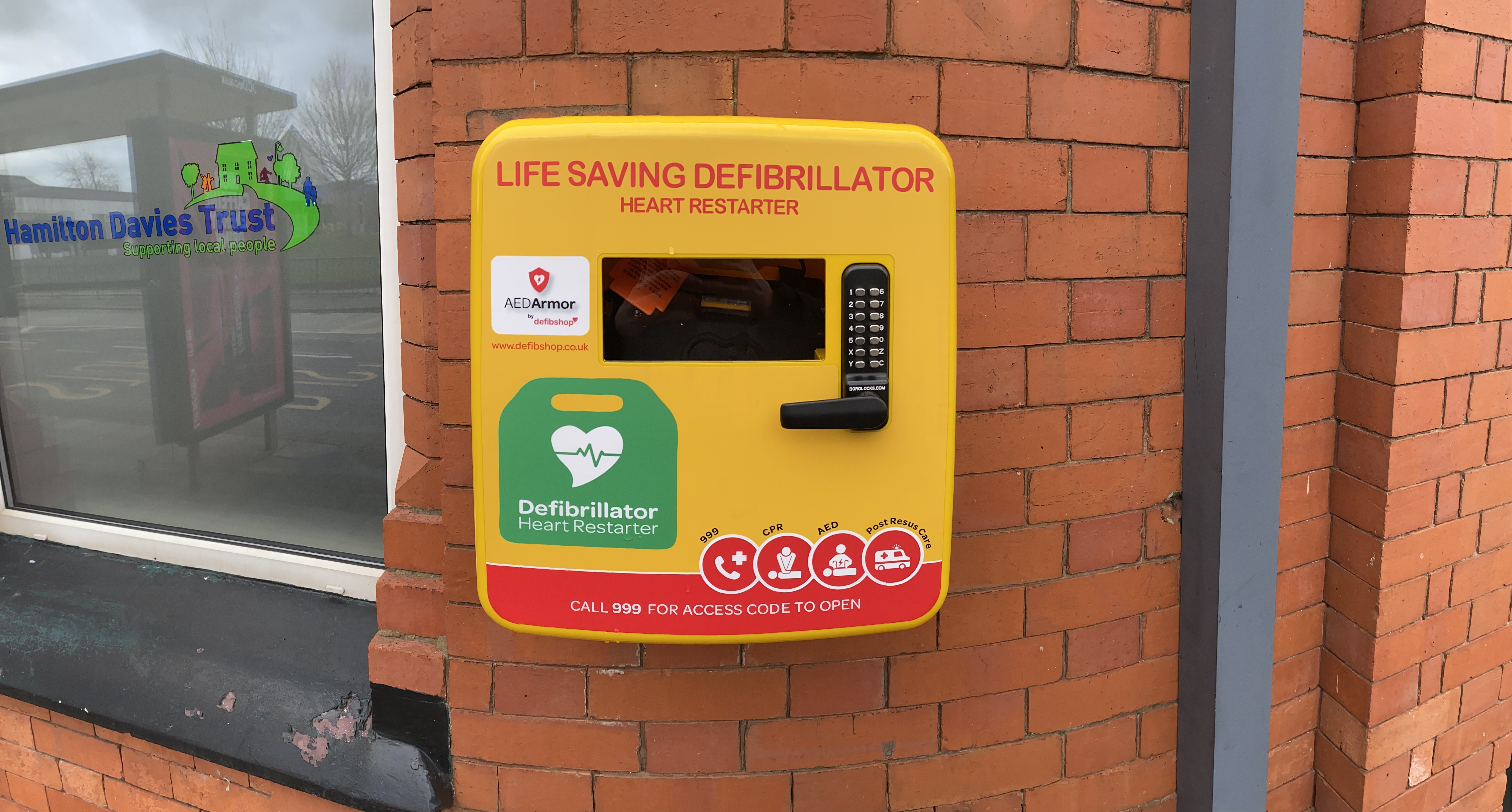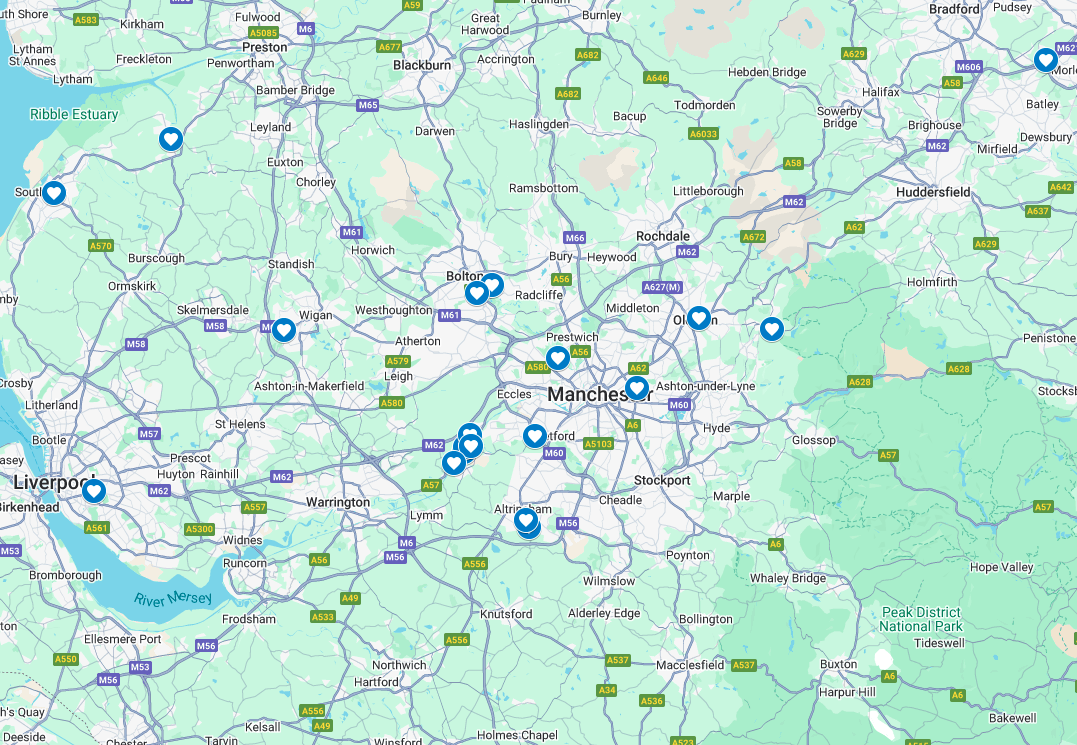Spotlight on AEDs in Manufacturing

Each and every working industry has its risks for both employees and employers. However, some employers, even in the most dangerous of industries overlook some of the most important health and safety aspects, including defibrillators. We’ve discovered that some of the reasons these life-saving devices are overlooked are because of:
Many employers are unsure of what AEDs do Many don’t feel informed enough about the devices Many people worry that using an AED on a casualty may cause further harm
Employees who operate in the manufacturing industry can expect to work in busy working environments with hazardous machinery and multiple risk factors. The busy, pressured environment can put employees in this particular industry at risk for sudden cardiac arrest (SCA). This is one of the many reasons why it is vital that manufacturing industry employers equip the working environments with everything that is required in an emergency.
In our latest Spotlight, we’re focusing on the manufacturing industry and why it is essential for all manufacturing companies to protect their employees against the risk of Sudden Cardiac Arrest.
The Importance of AEDs
Unlike other cardiac events, SCA does not discriminate and aspects such as your current health condition, age, gender and ethnicity do not factor when determining the cause of cardiac arrest, meaning everyone is at risk. So, whether you’re as fit as a fiddle or a regular couch potato, no one is immune from SCA.
The manufacturing industry is one of the more physically demanding industries people can work in. From car manufacturing to food manufacturing, in each manufacturing sector, employees can expect 5 days’ worth of repetitive labour, putting themselves under more physical strain in comparison to working in environments such as offices.
The repetitive labour could affect the employee’s muscles which in turn may lead to it affecting the heart, as the heart has to meet the demands of the muscles which are continually performing the same tasks.
It could be suggested that the strain on the heart to meet the demands of the repetitive muscle actions could lead to an SCA, and without an AED on-site to help restart the heart back into its normal rhythm, the victim’s chance of survival would decrease 10% per minute.
Manufacturing factories are usually situated in industrial estates which reside further away from the city or town centres and can only be accessed by authorised personnel (staff). It also isn’t unusual for manufacturing sites to span across large areas of land, in some cases, reaching over 1000ft².
If someone were to fall victim to sudden cardiac arrest whilst working in a manufacturing factory, these three aspects could make it difficult for the emergency services (EMS) to arrive at the scene in the elapsed time immediately after collapse. The longer that treatment is delayed, the lower their chance of survival, however, if treatment is successfully delivered within 3 – 5 minutes of collapse, the casualty’s chance of survival significantly increases from 6% to 74%.
Manufacturing and SCA Statistics
Every year in the UK, there are approximately 30,000 out-of-hospital cardiac arrests. It is estimated that 80% of these cardiac events occur at home, whereas the remaining 20% occur in a public place. Only 20% of these patients are in a shockable rhythm when the emergency services arrive. This figure could be increased if more people were aware of cardiac arrest and received immediate, effective CPR from a bystander. CPR in this instance would help to keep the heart in a shockable rhythm, ready for treatment from the defibrillator.
A successful resuscitation can only be achieved if both aspects of the definitive treatment for cardiac arrest are delivered to the patient. This includes the delivery of effective CPR, delivered on a ratio of 30 chest compressions to 2 rescue breaths and a potentially life-saving shock from a defibrillator. The shock from the AED will stop the heart, allowing the patient’s natural pacemaker to take over and restart the heart in a regular rhythm.
For every minute that the patient does not receive treatment, their survival chance decreases 10%, however, if treatment is delivered within 3-5 minutes of the patient collapsing, their chance of survival significantly increases from 6% to 74%. However, sadly, 90% - 95% of SCA casualties do not survive as treatment is not delivered.
According to EEF, there are currently 2.6 million employees in the manufacturing industry and Britain is the 8th largest manufacturer in the world by output. The HSE reported that in the 2016-2017 year, there was a total of 19 fatal injuries in the manufacturing industry. In the last 5 years, fatalities in the manufacturing industry were caused by :
Fall from heights (20%) Contact with machinery (18%) Struck by object (14%) Trapped by something collapsing/ overturning (10%)
Despite there not being an exact figure of the number SCA’s suffered within the manufacturing industry, having an accessible defibrillator on every site is equally as important as having a fire extinguisher or in some cases, a hard hat. By equipping your site with a life-saving AED, you’re prepared for the worst possible scenario, which if suffered in work, would be the patient’s only and best chance of survival, prior to the EMS arriving.
Manufacturing Industry Essential
In a manufacturing factory, it is vital that the employees are protected in every aspect of their job. It is important that the employees wear protective footwear as they’re likely to be on their feet all day and wear appropriate clothing that will allow them to do their job effectively. Overalls are used in a variety of manufacturing sectors, whereas loose clothing could pose a potential health and safety hazard. Some even require their employees to wear hard hats, depending on the goods manufactured.
With these aspects in mind, we prompt employers in this sector to consider the additional protection of a defibrillator for not only their employees, but for themselves and visitors alike.
Without a doubt, employees are the greatest asset to any company, regardless of industry. Without employees, no business idea, venture or project would have a chance of completion. Equipping your site with an AED and ensuring it is accessible to everyone on-site will help to demonstrate how you’ve gone above and beyond in your health and safety strategy and your investment in the lives of the workers.
Do you think AEDs should be a mandatory piece of equipment for manufacturing sites? Has your workplace already invested in a life-saving piece of equipment? We want to hear from you, so share your comments below, or alternatively, head on over to our Twitter page @defibshop and share your thoughts on AEDs in manufacturing.












